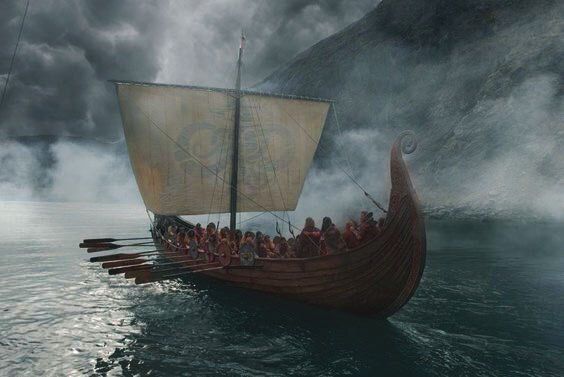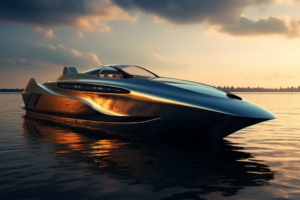The History of Boating: From Ancient Origins to Modern Marvels
It probably feels common sense to consider that boats in some rudimentary form have been around for a very long time. At some point in our anthropological history our ancestors looked at the vastness of a body of water and decided that it was worth the risk to see what was on the other side. In our modern world of using a sat nav to go 10 minutes down a signposted road, it is almost incomprehensible to take such a risk, but without the seafarers of history carving their way through the history of boating and through the unknown oceans, modern boat design would not be where it is. So lets take a look at watercraft through the years and see where it all began.4000 BC:
The ingenious minds of ancient Egyptians pioneered water travel with reed-built vessels, which marked the inception of sailing boats. Equipped with sails and masts, these reed boats navigated the waters of the Nile River.2500 BC:
The maritime prowess of ancient Egyptians advanced as they embarked on crafting sturdy wooden boats capable of transoceanic voyages, a testament to their seafaring expertise.1550 BC:
The Phoenicians, a civilization nestled in the region now known as Syria and Lebanon, harnessed the galley - a seafaring marvel. This human-powered sailing vessel became their conduit for both maritime commerce and warfare, forging connections with neighbouring lands.
1000 AD:
The Vikings etched their legacy with the iconic longboats, formidable ships that blended sails with manpower. These sleek vessels, manned by up to sixty rowers, maneuvered through rivers and oceans with exceptional agility.1100 AD:
Ingenious Chinese shipwrights introduced junks, vessels characterized by rudders for steering, resilient watertight compartments, and reinforced sail battens. These junks served dual roles as transportation and warfare vessels, predating similar innovations in Western shipbuilding.History of boating: Sailing boats
1450:
The dawn of the 15th century heralded the era of grand wooden ships adorned with three or four majestic masts. Serving as trading platforms, cargo carriers, exploration vessels, and naval warships, these multi-masted sailing ships symbolized global interconnectedness.
1660:
Charles II of England's pivotal voyage aboard a yacht from England to the Netherlands marked a turning point. Once exclusive to the Dutch navy, yachts emerged as vessels of prominence, ferrying influential individuals across waters.1800s:
The 19th century witnessed the rise of clipper ships - swift sailing vessels characterized by towering masts and slender, elongated hulls - revolutionizing maritime trade and travel.1818:
The inception of the Black Ball Line, a shipping company, introduced passenger services connecting the United States and England, bridging the Atlantic with unprecedented comfort and accessibility.History of boating: Steam Powered Engines
1819:
The transformative age of steam power took flight, propelling ships across the Atlantic. Steamships combined wind and steam propulsion, reshaping oceanic travel dynamics.1845:
Iron-hulled ocean liners emerged in the mid-1800s, supplanting traditional sails with propellers. This technological leap marked a new chapter in maritime engineering and transoceanic travel.1880:
The rivers witnessed the splendor of stern wheelers and paddle steamers, steam-driven river boats that facilitated inland transport, unveiling a new dimension of waterborne mobility.1910:
The transition from coal-fired to diesel-powered ships commenced, accompanied by a shift from steam to oil. This transformation modernized propulsion systems and optimized fuel efficiency.
1955:
Christopher Cockerell's visionary hovercraft boats glided onto the scene, elevating maritime innovation by employing air cushions for both propulsion and lift, rewriting the rules of watercraft design.History of boating: Cargo Ships
1980:
The 1980s marked the ascent of container ships, revolutionizing cargo transport with deck-stacked containers. These vessels epitomized efficient, large-scale logistics, capable of accommodating thousands of containers.1990:
The 1990s ushered in an era of luxurious passenger cruise ships, reshaping leisure travel. Packed with amenities like shops, restaurants, and entertainment, these floating resorts offered unforgettable holiday experiences.And here we arrive at the infancy of the 21st century, with lightweight fibreglass hulls, motor powered personal watercrafts, and floating homes. The future direction of boating both carved into place by its predecessors and open to interpretation by our future pioneers.
Where do you think the future of boating lies? Check out our article: The Future of Yacht Design to find out more!

